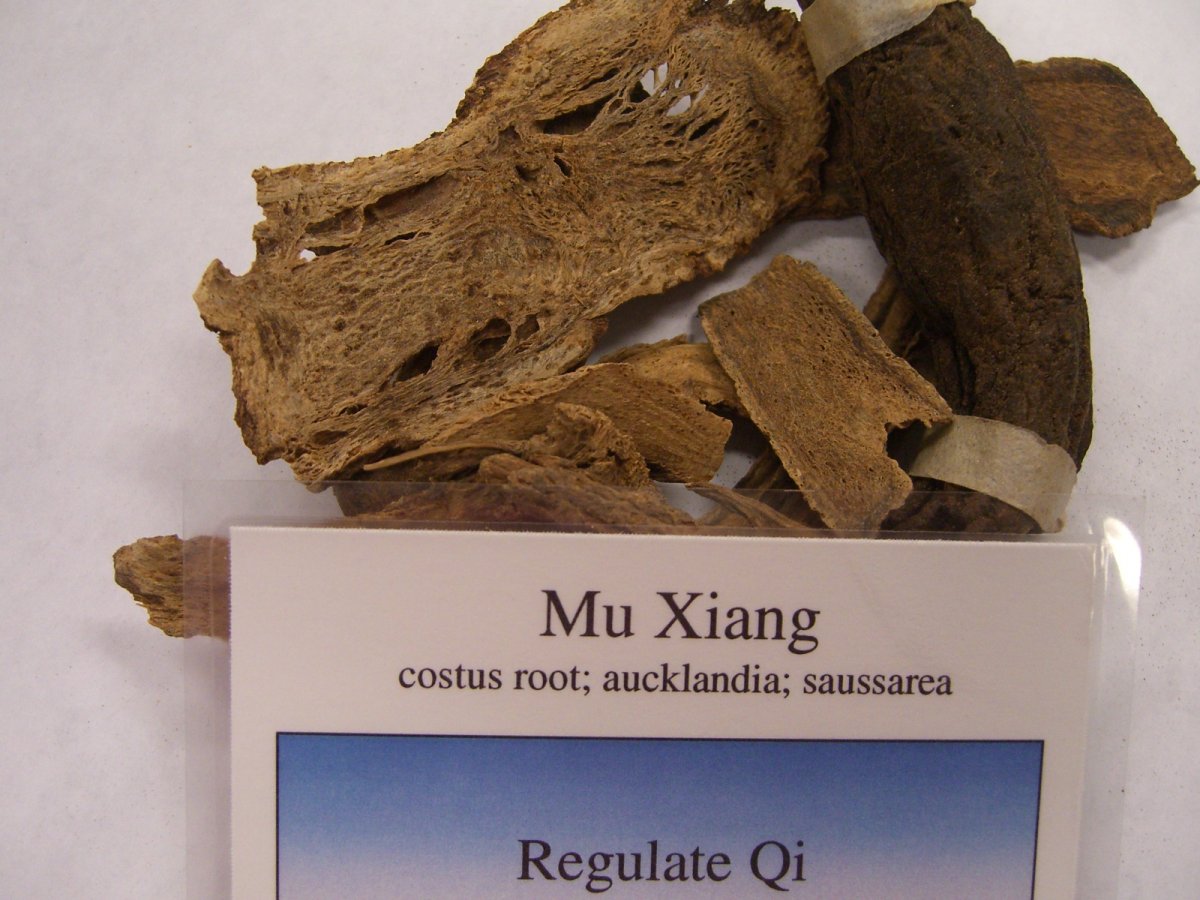Mu Xiang

| Mu Xiang in TCM:Explore the properties of Mu Xiang according to Chinese
Nutrition and Traditional Chinese Medicine (TCM):
Factoids:
English Name: sausserea, aucklandia, costus root
Pharmacuetical Name: Radix Aucklandiae
Properties: acrid, bitter, warm
Temperature: warm
Channels: LI, ST, SP, GB
Flavors: bitter, pungent
Special Properties:
circulates qi
Actions / Indications:
- Promotes the movement of qi and alleviate pain (SP
and ST qi stagnation with lack of appetite, epigastric or abdominal
pain and distension, nausea and vomiting, softens side effects of tonifying
herbs when Spleen qi is weak)
- Regulates qi of intestines (diarrhea, dysenteric
disorder; abdominal pain, tenesmus)
- Regulates LV and GB qi (gallstones, jaundice, flank
distension, pain, soreness, hernia)
Special Notes:
- (note: do not confuse with Qing Mu Xiang which is nephrotoxic)
- Mu Xiang is an essential herb to regulate abdominal qi and relieve
pain. It focuses on the lower intestines and is commonly used for intestinal
urgency w/ diarrhea.
Contraindications: - (cc: yin defeciency and depleted fluids)
Disclaimer: In accordance with our terms of service, by using this web site you agree that none of the information found on this web site constitutes medical advice. You should always consult your doctor before trying any particular food or herbal remedy to treat disease.
Folk remedies presented on this site are designed to address specifc TCM diagnoses, and are not one-size-fits-all. If you would like to learn more about Traditional Chinese Medicine (TCM) and how it relates to Chinese Nutrition, you can book in a free call with a licensed professional. There is no obligation to purchase.
[CLICK HERE for your free INITIAL CONSULTATION] |
